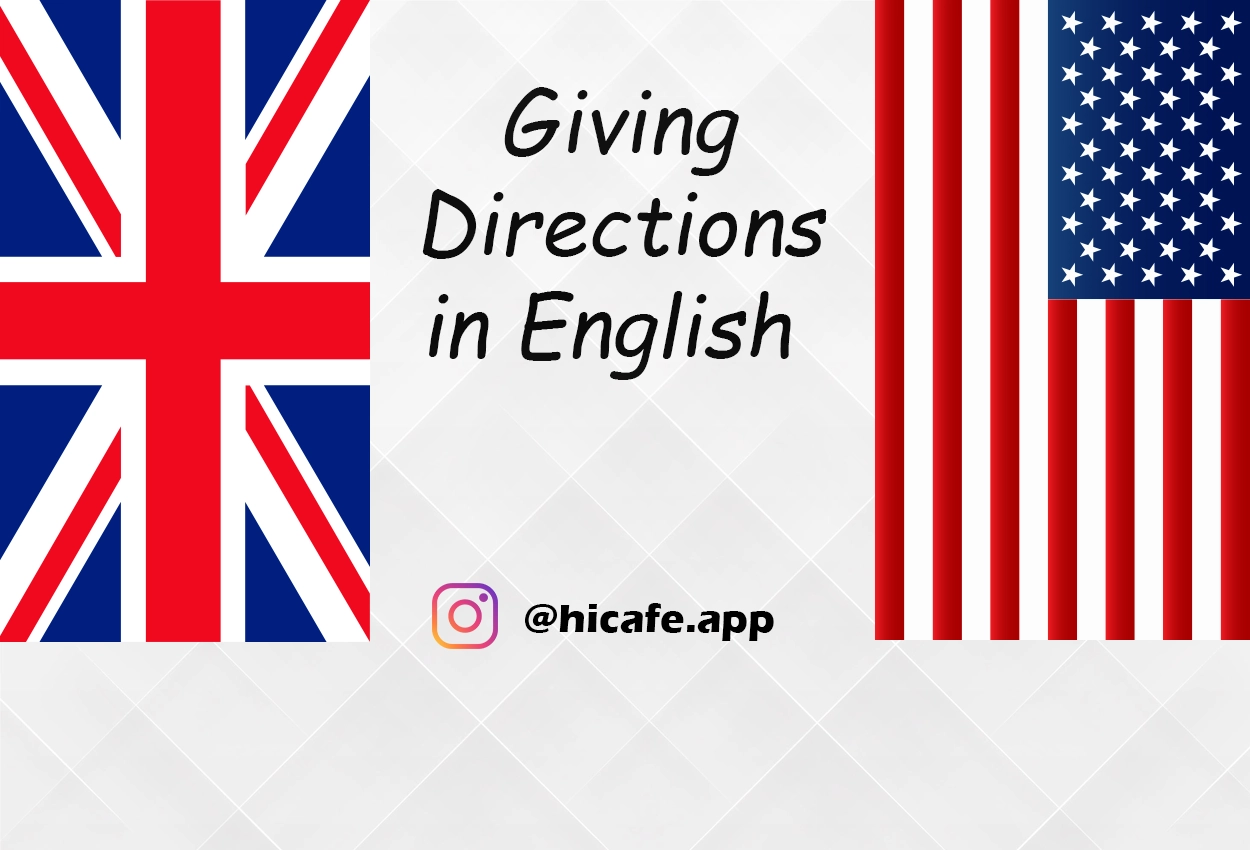
In our previous lesson, you learned how to give directions. To continue, in this lesson you learn phrases for giving directions in English. When traveling in a new place, it’s important to know how to ask for directions and understand the phrases used in giving directions. This guide provides useful English phrases for giving directions, including specific instructions and landmarks to help navigate.
Previous Conversation Tip Lesson
Asking for Directions English Lesson
Useful English Expressions for Giving Directions
Like asking for direction, giving directions will play an important role in communication. For example, when tourists visiting your country want to get more info about sightseeing places or city centers, you would be able to help them out by providing them with directions.
How to ask for directions
As a piece of advice or a general tip, say ‘excuse me’ before you ask a person since it may increase your chances of getting a response from the other person. Here are few examples:
- Excuse me, could you tell me how to get to the nearest hospital, please?
- Excuse me, I’m trying to find the museum. Do you know where it is?
- Excuse me, I’m looking for a good restaurant around here. Can you help me with that?
Giving directions
The person who helps you often says how near or far the place is:
- It’s about ten minutes from here.
- It’s about a five-minute walk.
- It’s easier if I can show you on the map…
Specific instructions
Here are some useful words and phrases for giving directions on the street. Maybe you’re helping a driver, or someone who stops you to ask for directions.
- Turn left / right.
- Go straight on at the lights / when you come to the crossroads. (Lights = traffic lights; crossroads = where two roads cross)
- Go across the roundabout. (Roundabout = where all the cars go round a circle in the middle of the road)
- Take the first turning / road / street on your left / right. (Turning = road that goes left or right)
- You’ll see / You’ll come to a (bank). Then …
- Don’t take the first road.
- Go on for about (2 minutes / 100 meters).
The Use of Landmarks for Directions
We often make reference to landmarks when we give directions to help the other person. These landmarks can include various locations within a town or city, like cinemas, banks, or bus stops, as well as specific parts of the road system. Here are some common terms:
- taxi rank = a place where taxis queue for passengers
- level crossing = where the road and railway meet. There are barriers that go up and down to signal when a train is coming
- underpass = a walkway that goes under a busy road so pedestrians can get to the other side safely
- overpass / flyover = a road that goes over another road (or railway)
- zebra crossing = black and white markings in the road for pedestrians to cross the road (the markings look like a zebra’s stripes)
- pedestrian crossing = a place in the road where pedestrians can cross. Often there are traffic lights.
- tunnel = a road under (or through) mountains
- crossroads = where two roads cross each other
- junction = where one road meets another, and you can either go left or right
- fork in the road = where the road divides, and you decide to go left or right
- turning = a road off to your left or right
- main road = a big road where there is lots of traffic
- lane = a small road, or a part of a road (the left-hand lane / the right-hand lane; the bus lane)
Use prepositions of direction
Using prepositions properly while giving directions will allow you to give information more precisely and concisely. Here are a few useful prepositions:
- Go past = continue past something so that it is now behind you
- Go across = cross something, like a road or crossroads
- Go along = continue down a road
- Go straight on = don’t turn left or right
- Go up = walk / drive up a hill
- Go down = walk or drive down a hill or a road
- Go through = pass through something, such as a tunnel or a town
- Go out of = exit (i.e. a railway station)
- It’s in front of you = you can see it facing you
- It’s opposite the bank = it faces the bank
- It’s on the corner = it’s where two roads meet at a 90° angle
Daily English conversation
Putting together tips we learned in this lesson, here is a typical daily English conversation:
- Excuse me. I’m looking for the train station.
- Sure, go straight on, then take the first left. The station is just ahead on your right.
- Thank you so much!
- You’re welcome. Have a safe journey!
Conclusion
With these phrases and tips, you’ll be able to confidently ask for directions and navigate your way through unfamiliar places in English-speaking countries. Next time that you find yourself in need of directions or someone stops you for help, make sure to use these tips. Remember to be polite and use landmarks to make it easier for others to help you. Happy travels!
Next Conversation Tip Lesson
English Conversation For tourist
Related Conversation Lessons
None
Practice Conversation with HiCafe App
By using HiCafe App, you can join free discussion events and Practice English Conversation online or in-person and improve your verbal skills.
All Conversation Lessons
To see and read all of our conversation lessons, you can visit our Improve English Speaking Skills page.


